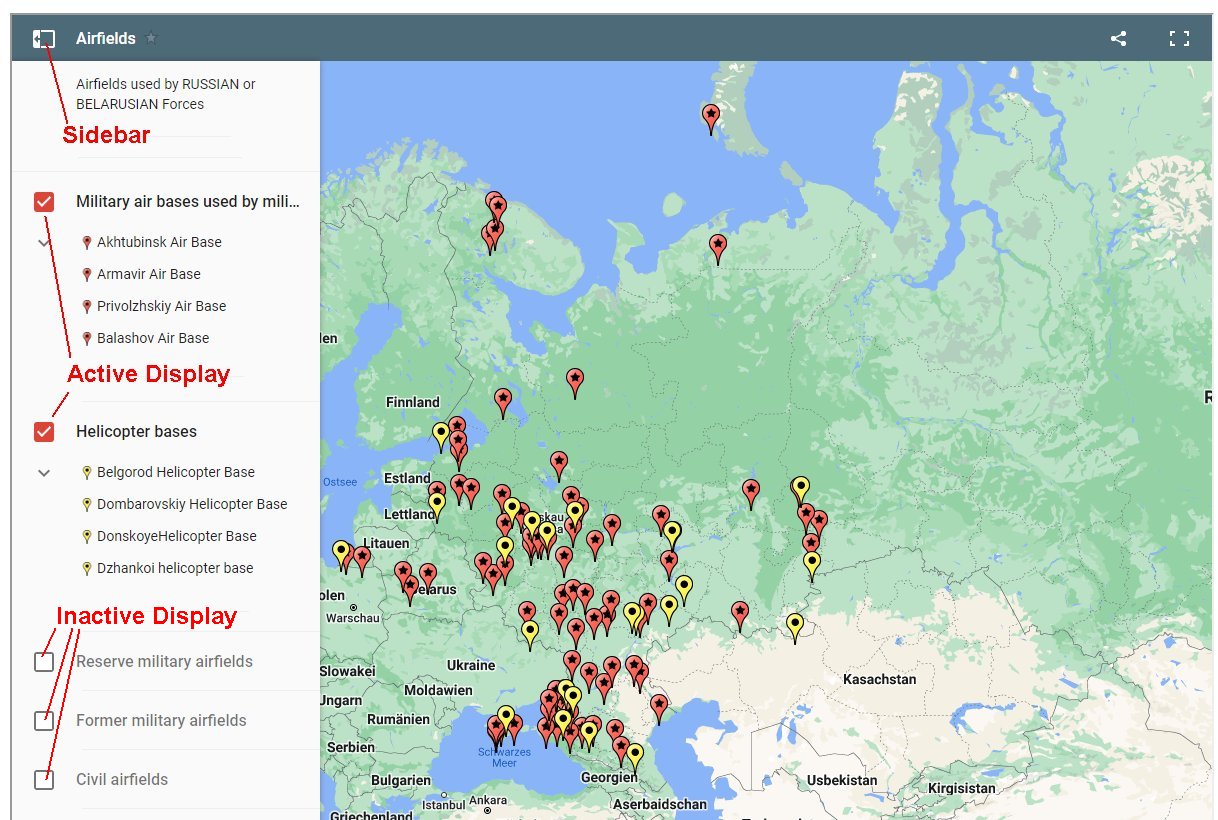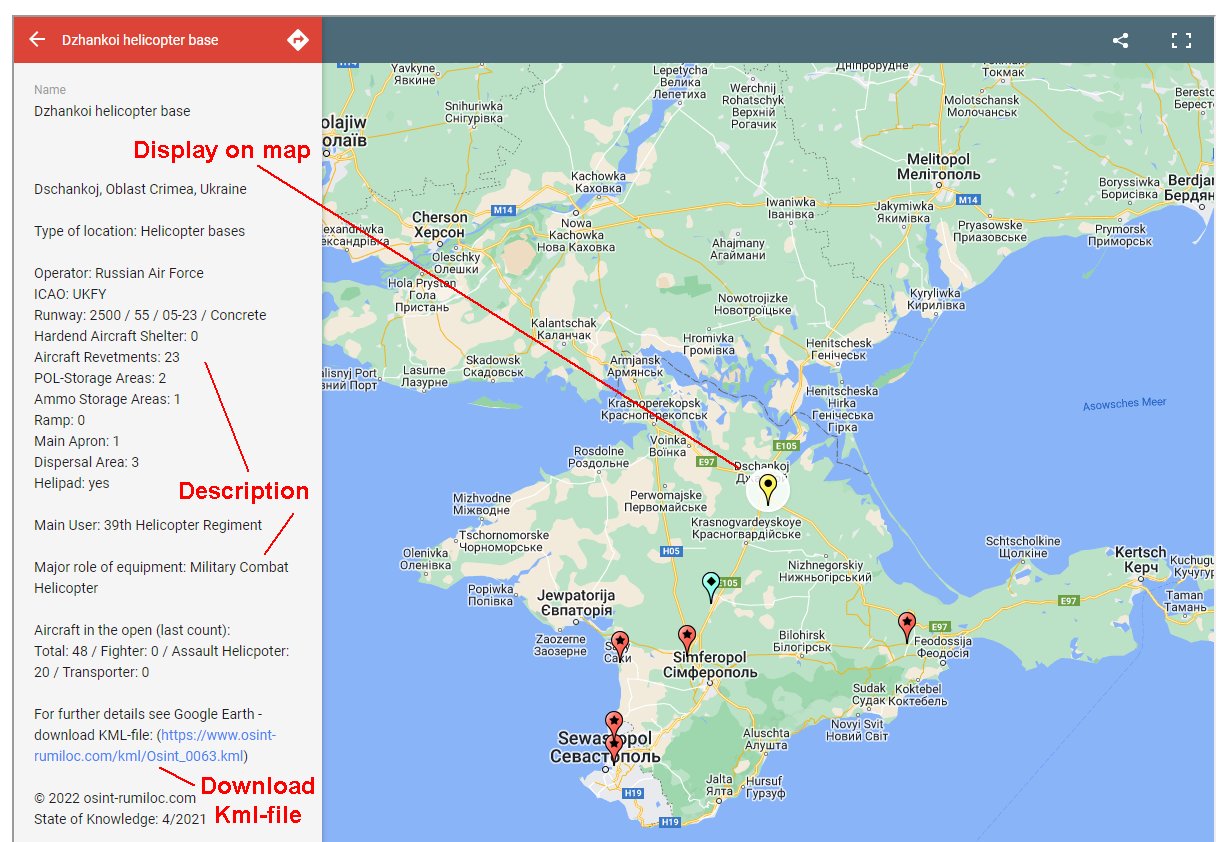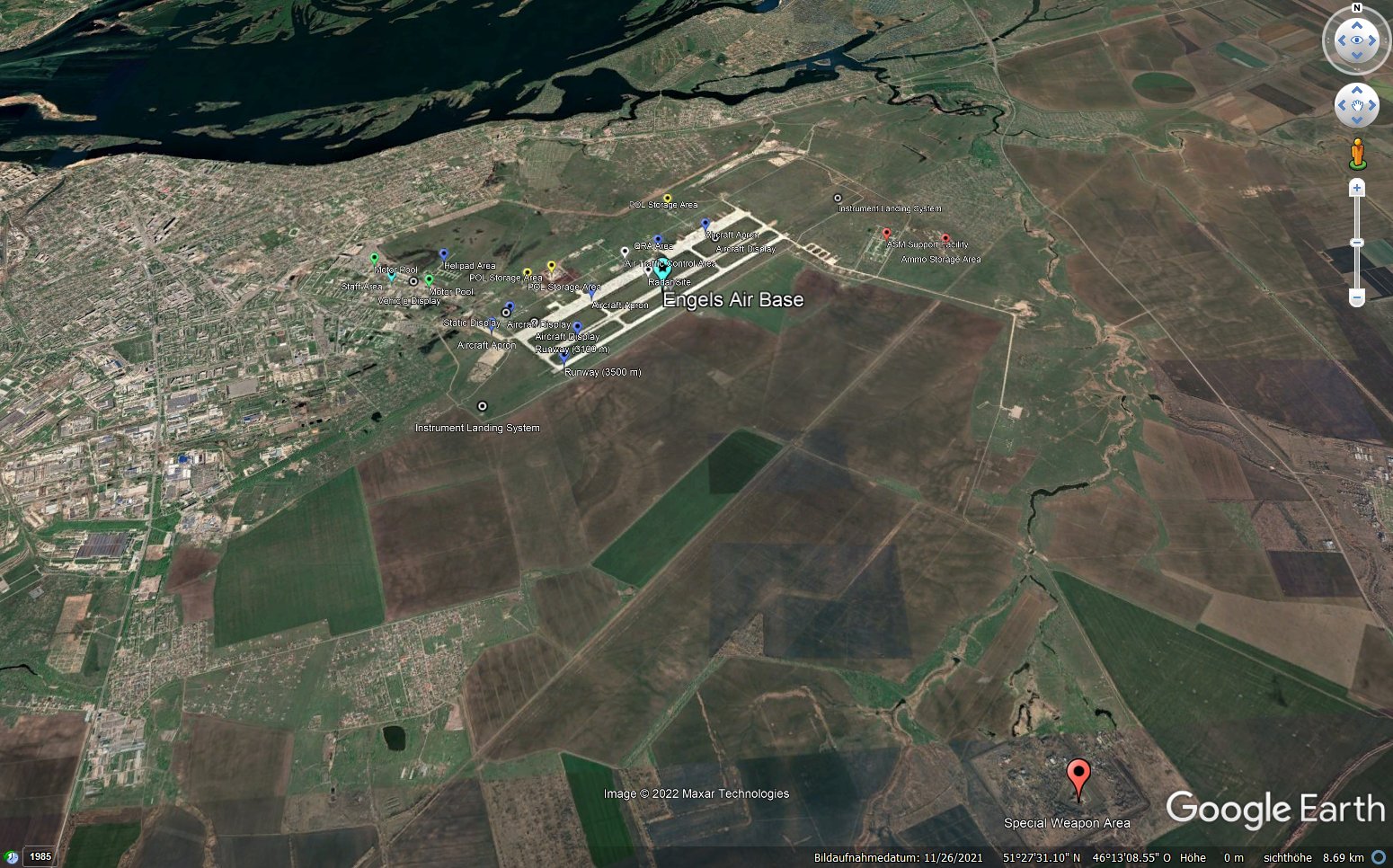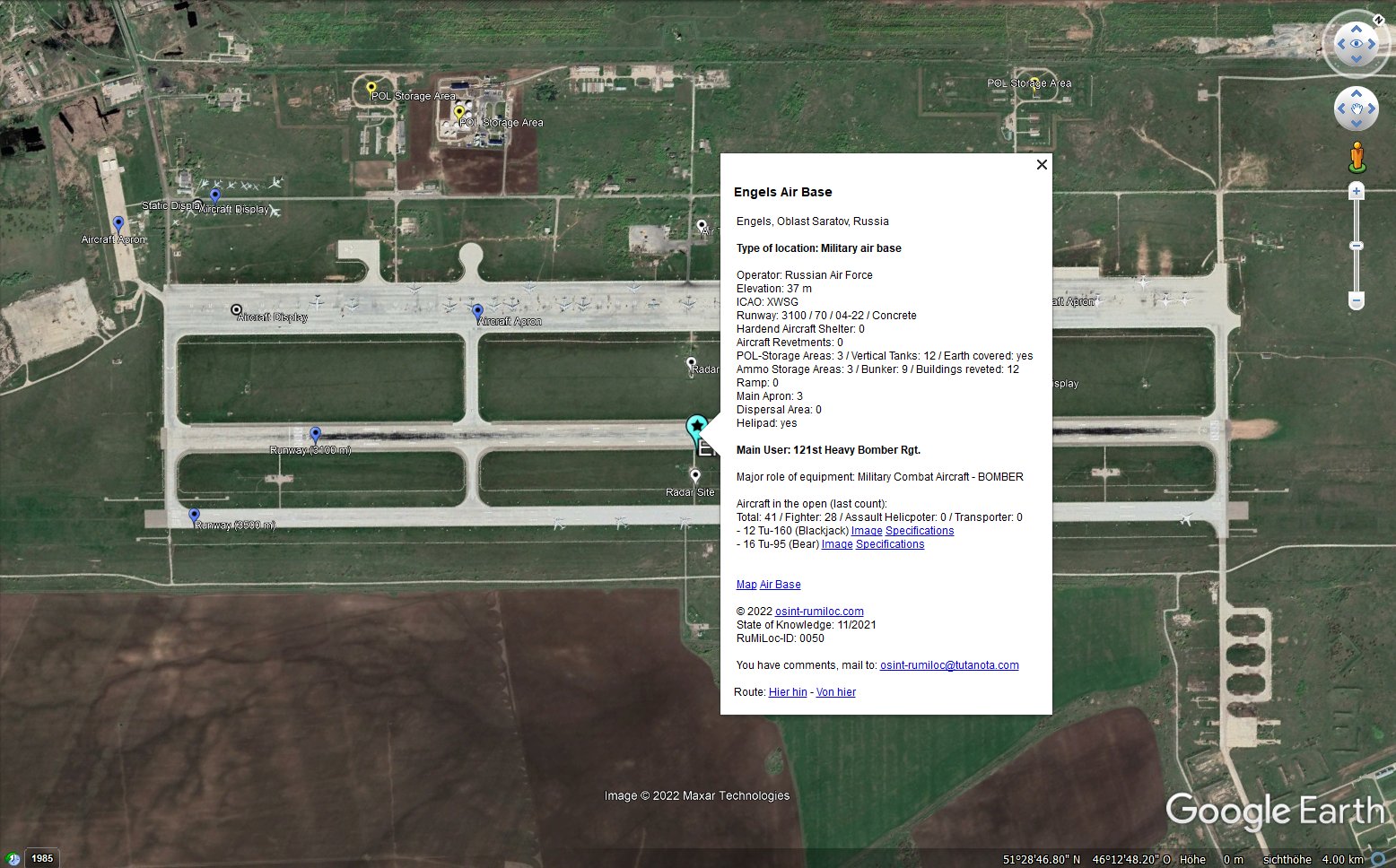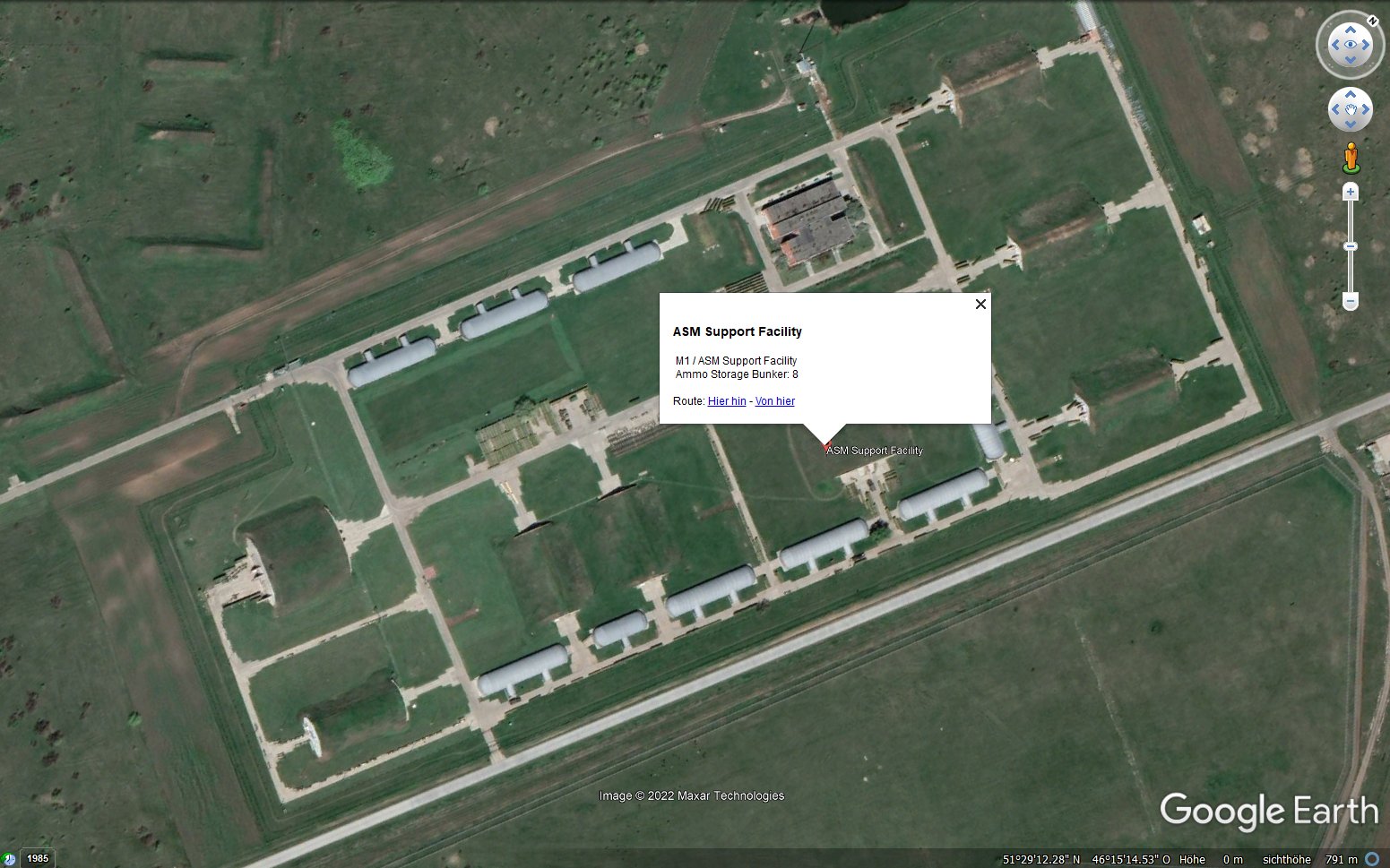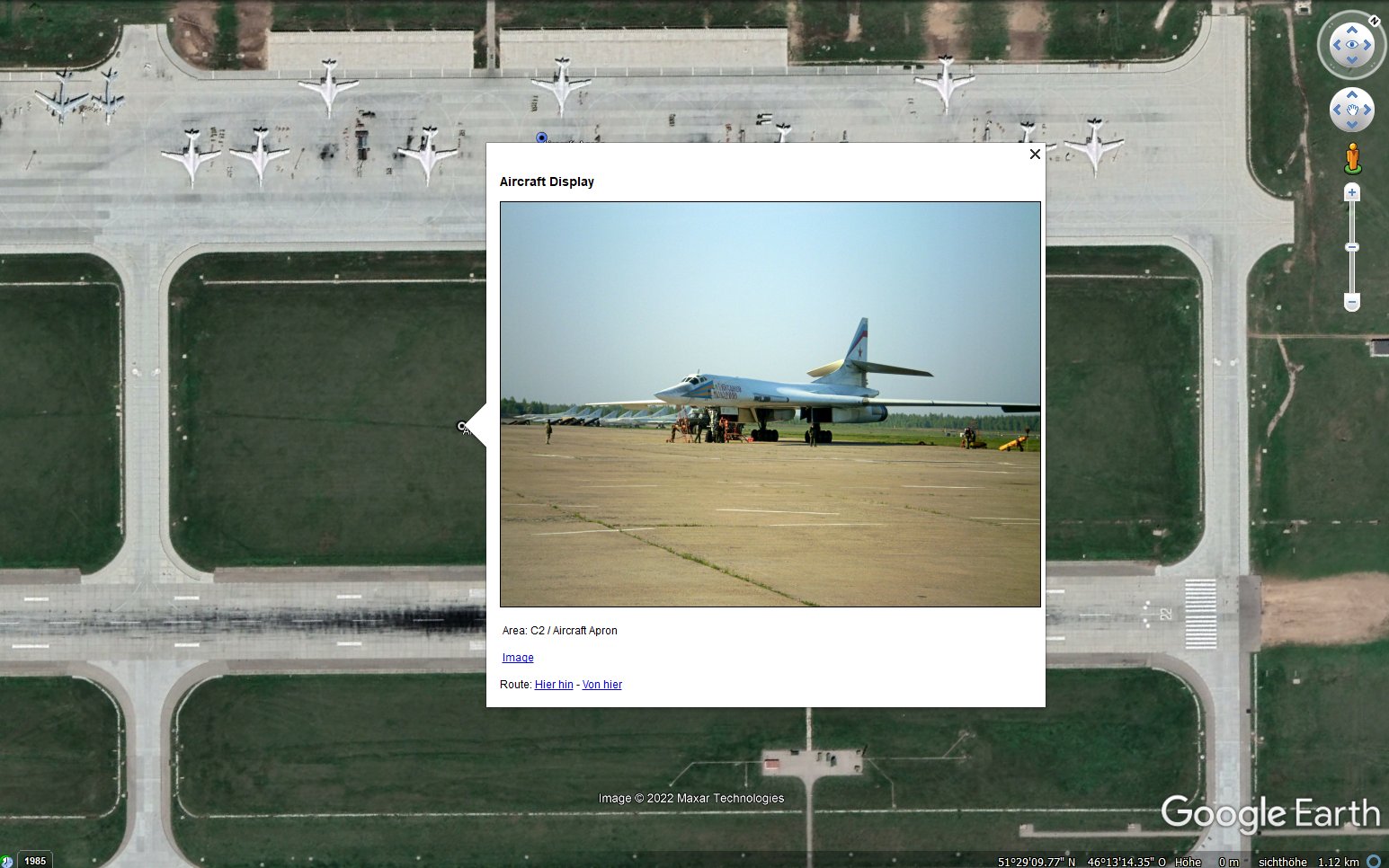OSINTREP
We
regularly check all objects for changes and
report on major
construction work or inventory
changes to
weapon systems such as aircraft or tanks on
our Twitter channel.
https://twitter.com/@OSInt_RuMiLoc
Because
Twitter only allows 280
characters per tweet, we report changes in objects through formatted messages.
The reporting format is called "OSINTREP"
and stands for Open Source INTelligence REPort.
Each line begins with a record
identifier (e.g. "LOC"
for location), followed by the message content. The individual message
contents are separated by the character "/", the end of a block is
marked with "//".
This approach, using standardized abbreviations, allows as much
information about an object to be included in a message as is necessary
to uniquely identify
a location
and to describe
the changes
in the location. At the same time, interested parties can use this
standardized reporting format to develop program routines
with which the report contents can be automatically read
into their own databases,
archived
and processed.
The permalinks
of the individual messages (tweets) are entered in the balloons of the KML files for the
corresponding location and can be called up in Google Earth (via
Google Chrome on the right side of the Google Earth screen) in order to
display the content of a message.
The
following abbreviations
can appear in an OSINTREP:
|
